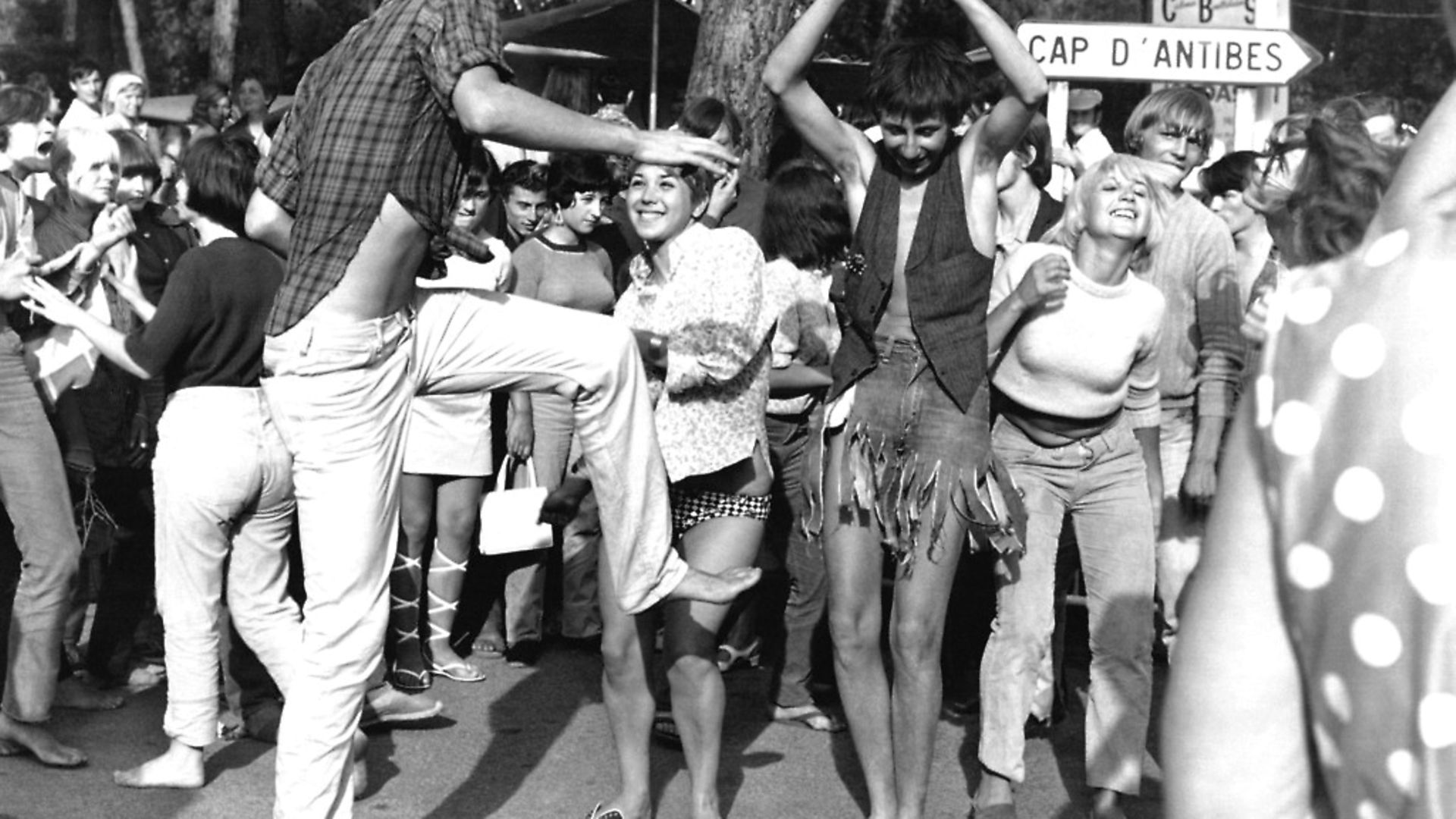
SOPHIA DEBOICK on the French resort that came to embody the very essence of glamour and hedonism.
Juan-les-Pins had two golden eras, one in the carefree inter-war years and one in the 1960s, both decades of revolution in fashion, cinema and music and of beautiful people.
Situated between Cannes and Nice, the Cap d’Antibes peninsula had been a fashionable winter resort for the rich and famous and the world’s peripatetic aristocracy since the coming of the railway to Antibes itself in the 1860s, but it was only in the 1920s that Juan-les-Pins, on the other side of the peninsula, became something more than a poor fishing village.
As a refuge of writers, artists and professional hedonists, it became synonymous with both summer leisure and the cultural zeitgeist and was where the high living of the 1920s was writ large.
Now, Juan-les-Pins is synonymous with the dream of the Côte d’Azur – crystalline seas, golden beaches and bronzed bodies.
Such imagery could only be soundtracked by jazz, and this is a place that for 60 years has hosted one of the key festivals of the international jazz calendar and become a legend in the genre.
Cole Porter could be credited for making Juan-les-Pins what it is today. In the early 1920s Porter was living it up spectacularly in Paris and Venice, but in the summer of 1922 he rented the lavish villa the Château de la Garoupe near the Cap d’Antibes peninsula’s southern extremity and invited his old chum from Yale, Gerald Murphy, and his wife Sara to stay.
This ultra-modern, devastatingly fashionable couple had recently set up home in Paris, seeking an escape from the suffocating properness of their well-to-do families back in the US, and on Plage de la Garoupe they discovered a beach life that was the embodiment of the freedom they sought.
For the first time, beach sunbathing became a ‘thing’, and a fashionable one at that and the Murphy’s were sold on living on the French Riviera.
The Murphys returned to the south the following year, renting out the entirety of the palatial 19th century Hôtel du Cap for the summer. It was in that idyllic season that they inspired a key moment in Porter’s fledgling career.
Porter had just one hit under his belt – Old Fashioned Garden from the revue Hitchy-Koo of 1919 – his many standards yet to be written, when he was invited by Gerald Murphy to collaborate on Within the Quota for the Ballets Suédois.
This little-remembered work premiered in Paris in October 1923 and the score lost for decades, but it was remarkable in two ways. Not only was it unusual as an American ballet with an American theme (it was about an immigrant to the US who becomes a film star), but its use of symphonic jazz was pioneering, and anticipated Gershwin’s Rhapsody in Blue by several months.
The Murphys moved to Cap d’Antibes lock, stock and barrel the following year, their home at 112 Chemin des Mougins, further up the peninsula towards Juan-les-Pins, christened ‘Villa America’ and becoming the centre of a summer social scene which attracted the likes of F. Scott Fitzgerald, who immortalised their dazzling personalities and physical beauty in Tender Is the Night, and Pablo Picasso, who produced several studies of Sara.
Soon railway fortune heir Frank Jay Gould seized on the virgin territory of Juan-les-Pins proper, renovating the old casino and then opening a luxury hotel, the fashionably Art Deco Le Provençal, in 1926.
The international glitterati flocked to both venues – the Duke of Windsor and Mrs Simpson, Charlie Chaplin, Marlene Dietrich and Maurice Chevalier. Less well-known musical stars like Lilian Harvey, the British-born star of German cinema who fled Nazi Germany for the Riviera, and French comic actor Georges Milton, were among many personalities who lived out their retirement years at Juan-les-Pins and died there in the decades that followed.
As France finally emerged from the shadow of war in the 1960s chic beach life again came to stand for freedom. The ‘Long Sixties’ began in 1958 according to social historian Arthur Marwick, but by then Brigitte Bardot had already made both the Riviera’s beaches and the bikini two crucial aspects of France’s 1960s aesthetic via Manina, la fille sans voiles (1952) and ….And God Created Woman (1957), the latter the Saint Tropez-set film which made an international star.
Bardot became the poster girl for the Riveria just as much as for France’s era of sexual permissiveness and the triumph of youth. By 1960, both the bikini and Juan-les-Pins specifically were being immortalised on the French charts as symbols of the youthful zeitgeist.
Both pop diva Dalida and teen sensation Johnny Hallyday released French language versions of Brian Hyland’s Itsy Bitsy Teenie Weenie Yellow Polkadot Bikini that year, and Hallyday played the Vieux Colombier on boulevard de la Pinède that summer and was photographed lounging on the beach.
That same year Lebanese novelty singer Bob Azzam had a hit with the cha-cha tune Viens à Juan-les-Pins, a tale of holiday romance and ‘salty kisses’. In her brief singing career during the heady days of yé-yé Bardot would also sing of love by the seaside on Une histoire de plage (1964).
But 1960 was crucial for Juan-les-Pins for other reasons. The inaugural Jazz à Juan Festival was held that year as a tribute to the recently deceased clarinettist of the Jazz Age Sidney Bechet, who had married in Antibes in 1951 – he recorded the typical Dixieland tune Dans les rues d’Antibes the following year – and become a longtime resident.
The setting was idyllic, making use of the Jardin de La Pinède pine grove in the heart of Juan-les-Pins, adjacent to the square that bears Frank Jay Gould’s name as the man who made the resort, and the atmosphere of the incomparable experience of listening to the world’s jazz greats perform within spitting distance of the sea amid the Mediterranean fragrances of pine, jasmine and honeysuckle are captured on several notable recordings.
Charles Mingus’ electrifying free jazz performance at the first Jazz à Juan festival was captured on Mingus at Antibes, released by Atlantic in 1976, while Dizzy Gillespie’s Dizzy on the French Riviera was released by Philips shortly after the 1962 appearance it documented.
Miles Davis in Europe (1964) was a snapshot of him in transition between his first and second ‘great quintets’ when he played the 1963 festival. The album Ella at Juan-les-Pins was particularly notable, Fitzgerald’s barnstorming performance of 1964 including an improvised ode to the cicadas that were threatening to drown her out as the sun set.
The John Coltrane Quartet’s 1965 festival performance was the only time any of Coltrane’s masterwork A Love Supreme (1965) was performed live, and was later released as Live in Antibes (1988).
Juan-les-Pins was not only a stage for all-time great performances but it indirectly spawned many others, since Claude Nobs, founder of the Montreux Jazz Festival 300 miles north, once said ‘If I hadn’t passed through Antibes, Montreux wouldn’t exist’.
By the end of the 1960s Brit Peter Sarstedt’s piece of accordion-laced faux Europeana Where Do You Go To (My Lovely)?, which was a UK No.1 hit in early 1969, could use Juan-les-Pins as a byword for the jet-setting beautiful people of the Continent (‘When you go on your summer vacation/ You go to Juan-les-Pins/ With your carefully designed topless swimsuit/ You get an even suntan’).
Juan-les-Pins’ glamour may have faded since as it has become overdeveloped, but the town’s reputation was fixed for all time, and even if this is a summer when the town’s streets will be largely bereft of sun-seekers and the Jardin de La Pinède has fallen silent, the music of Juan-les-Pins still has the power to transport to a European paradise.









